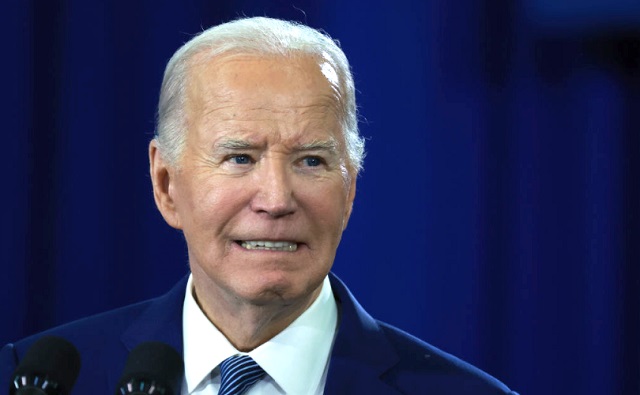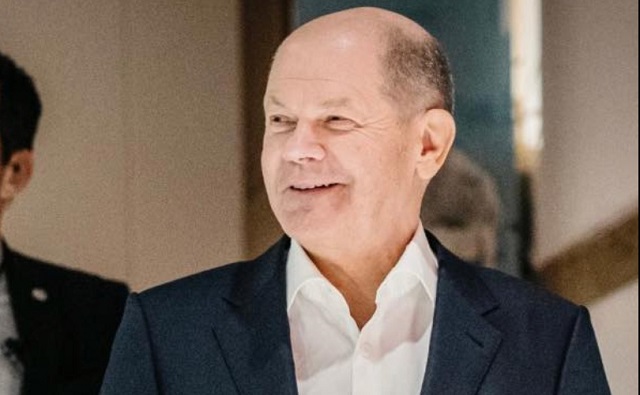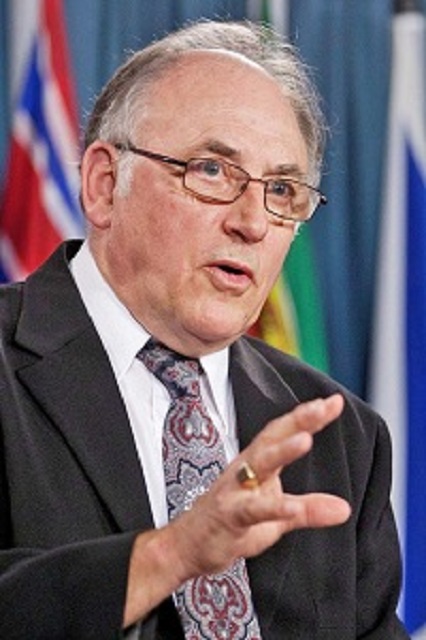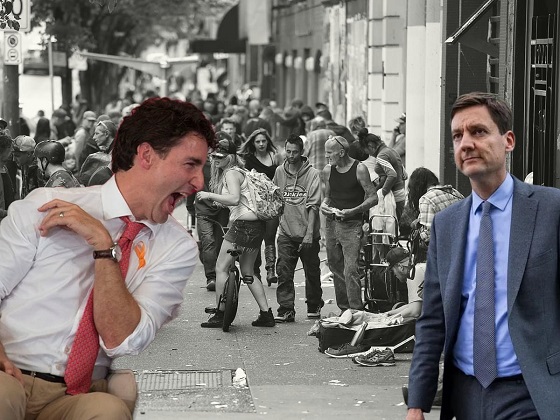Business
The SBF Scandal: The Players and the Money

From the Brownstone Institute
BY
The complexities of the FTX scandal with Sam Bankman-Fried at the helm boggles the mind. Unlike the Madoff scandal, which was incredibly simple, the funding, influence, and political networks sounding the $32 billion collapse of FTX is byzantine by design.
Just have a look at the org chart of the company to get a sense. It’s all the better for avoiding oversight.

What we really need in the months or even years in which it will take to sort all of this out is some kind of key to the major players. What follows is a list which we’ve put together in order of network importance for easy reference. This small effort is made necessary because there seems to be very little attention being given to the entire SBF empire, both in terms of the players with whom he worked and where the money ended up.
It’s nowhere near being a guide to the fullness of the networks of funding and influence, and can only begin to hint at the real story of what was really behind this magic bean factory in the Bahamas. Their operations and networks are deliberately obscure and fan out over many countries, institutions, and individuals. There is a strange silence in the air about the details other than the general observation that Sam Bankman-Fried was up to no good.
And yet there were obviously many people involved. It’s probable that the main point was to fund political causes in a way that gets around federal election law, as the indictment suggests in count eight. However, a close examination of the networks keeps coming back to the strange theme of pandemic planning and support for various methods of controlling the population in the name of controlling infectious disease. Aside from political donations, this was a central concern. What that has to do with a crypto exchange is another matter.
All of which should raise a question given the time of the life of FTX (2019-2022): to what extent was the network surrounding this institution useful in providing back-channel funding support for (and lack of opposition to) the most unprecedented attack on human liberty in our lifetimes? This question applies to both the direct political contributions and the various other donations to institutions and individuals.
Corrections to this list are welcome.
Family
Sam Bankman-Fried: Went to MIT, worked for Centre for Effective Altruism (fundraising 2017) and started Alameda Research in November 2017, and then the crypto trading company FTX two years later, which he ran until 2022 when it all collapsed after becoming the second-largest donor to Democrats ($38M).
Barbara Helen Fried: mother of Sam, Harvard Law graduate, professor at Stanford University, booster of Effective Altruism, and founder of Mind the Gap, a secretive political action committee in Silicon Valley.
Alan Joseph Bankman: father of Sam, Yale Law graduate and later clinical psychologist, law professor at Stanford, and author and expert on tax law.
Linda Fried: Sam’s aunt on his mother’s side and Dean of School of Public Health at Columbia University and on the board of the World Economic Forum’s Global Agenda Council on Aging.
Gabriel Bankman-Fried: Sam’s brother who ran Guarding Against Pandemics, a lobbying organization supporting “pandemic planning” also known as lockdowns and vaccine mandates. It has a Capitol Hill headquarters that cost $3.3 million. He previously served on a Congressional staff.
Associates
Caroline Ellison: Schooled at Stanford, she is daughter of Glenn Ellison and Sara Fisher Ellison, both professors at MIT. She became CEO of Sam’s Alameda Research and reported girlfriend of Sam’s.
Sara Fisher Ellison and Glenn Ellison: Caroline’s mother is professor of economics at MIT with a research specialization in the pharmaceutical industry while her father has written at least four papers on epidemiological modeling.
Nishad Singh: former MIT roommate of Sam’s who is said to have built the FTX platform. He seems to have left the Bahamas for India.
Zixiao “Gary” Wang: Co-founder with Sam of FTX and Alameda. He graduated from MIT and worked for Google. Beyond that hardly anything is known about him. He seems to have left the Bahamas and is reported to be in Hong Kong.
Ryan Salame: Graduate of UMass-Amherst and head of FTX Digital Markets, plus proprietor of R Salame Digital Asset Fund through the Berkshire Taconic Community Foundation, allegedly for charitable purposes.
William David MacAskill: real name Crouch, William is an author and philosopher and founder of the Centre for Effective Altruism and a close colleague of Sam’s. He served on the board of FTX Future Fund until it collapsed. He is a media personality who gives TED talks and is a leader purveyor of the view that one should get very rich and give it away.
Funded Institutions and Individuals (some taken from here)
Together Trial: This elaborate trial of therapeutics ended up inveighing against Ivermectin and Hydroxychloroquine and was generously funded by FTX. But that has been scrubbed from the public website. This is a continuing problem.
Moncef Slaoui: The head of Operation Warp Speed, he received $150,000 from FTX to write SBF’s autobiography, according to a Washington Post investigation.
HelixNano: A vaccine company that claims to be developing mutation-resistant vaccines, which received $10M in funding from FTX Future Fund, according to a Washington Post investigation.
Johns Hopkins Center for Health Security: This institution ran the Event 201 lockdown tabletop exercise in 2019, and received at least $175,000 for a single employee, from FTX coffers. We don’t know the full extent but it was enough for the head of the Center to defend Sam and FTX in public. Nor do we know Alameda Research’s funding reach of this institution.
Guarding Against Pandemics: Run by Sam’s brother Gabriel, this 501c4 gave at least $1M to campaigns in 2022. We do not know how much money Alameda/FTX funneled to this institution. Sam fequently recommend it as a target for charitable giving.
Protect Our Future: run by the two brothers, this PAC gave $28M to candidates in the 2022 cycle. We do not know how much Alameda/FTX gave.
Center for Innovation in Global Health, Stanford University: FTX and its network gave $1.5M to the institution.
ProPublica: A grant of $5M from FTX Future Fund. Other reports say $27 million.
Centre for Effective Altruism: FTX Future fund gift of $14M
Effective Ideas Blog: It promised to pay $1K to good blogs, and its Twitter frequently links to other institutions and individuals in the FTX network. Funded by Future Fund: $900K
Piezo Therapeutics: “Work on technology for delivering mRNA vaccines without lipid nanoparticles with the aim of making vaccines more safe, affordable, and scalable.” FTX gave $1M
Council on Strategic Risks: “a project which will develop and advance ideas for strengthening regional and multilateral cooperation for addressing biological risks.” $400K from FTX
AVECRIS Pte. Ltd: “support the development of a next-generation genetic vaccine platform that aims to allow for highly distributed vaccine production using AVECRIS’s advanced DNA vector delivery technology.” $3.6M from FTX
University of Ottawa: “a project to develop new plastic surfaces incorporating molecules that can be activated with low-energy visible light to eradicate bacteria and kill viruses continuously.” FTX gave $250K
1Day Sooner: “work on pandemic preparedness, including advocacy for advance market purchase commitments, collaboration with the UK Pandemic Ethics Accelerator.” FTX gave $300K.
SAGE: “creation of a pilot version of a forecasting platform, and a paid forecasting team, to make predictions about questions relevant to high-impact research.” FTX gave $700K
Longview: “global priorities research, nuclear weapons policy, and other longtermist issues.” Advisor: William MacAskill. FTX gave $15M
Confirm Solutions: “support development of statistical models and software tools that can automate parts of the regulatory process for complex clinical trials.” FTX gave $1M
Lightcone Infrastructure: “ongoing projects including running the LessWrong forum, hosting conferences and events, and maintaining an office space for Effective Altruist organizations.” FTX gave $2M
Rational Animations: “the creation of animated videos on topics related to rationality and effective altruism to explain these topics for a broader audience.” FTX gift: $400K
Giving What We Can: “to create a world in which giving effectively and significantly is a cultural norm.” FTX gift: $700,000
The Atlas Fellowship: scholarships for talented and promising high school students to use towards educational opportunities and enrolling in a summer program. FTX gift: $5M
Constellation: “support 18 months of operations for a longtermist coworking space in Berkeley.” FIX coughed up $3.9M
Longview Philanthropy: “creating a longtermist coworking office in London.” FTX committed $2.9M
Long Term Future Fund: “longtermist grantmaking.” FTX committed $3.9M
OurWorldinData: graphs and charts portal. FTX committed $7.5M
Institute for Progress: “research and policy engagement work on high-skilled immigration, biosecurity, and pandemic prevention.” FTX was in for $480K. Additional support came from Emergent Ventures, which was modeled on Fast Grants that funded Neil Ferguson’s pandemic modeling at Imperial College London, which seems to have an entangled relationship with the SFB empire, one yet to be fully disclosed.
Conclusion
What is listed above only scratches the surface of the admitted $160 million given out, but the promise had been for fully $1 billion to go to various nonprofits in this network that seems to be supported or even founded in order to receive money from FTX-connected institutions.
We could only list some of the names and a fraction of the dollar amounts. There are many other institutions and names that could be part of this list but we lacked enough documentation to verify for this article. There is still the task of listing all political campaigns that were in receipt of the money as well as the public-relations boosters of the whole effort.
Building off the success of Bill Gates, Sam Bankman-Fried, and his many associates, clearly saw philanthropy as the path to influence, power, and protection. At the same time, many nonprofit organizations saw an opportunity too; to build their own empires through promised millions and billions from a crypto genius in the Bahamas who had an unusual passion for pandemic planning.
For three years, many of us have wondered how it came to be that the critics of lockdowns and mandates were so few and far between. There are surely many explanations but, as usual, it helps fill in the dots to follow the money.
Business
UN plastics plans are unscientific and unrealistic

News release from the Coalition of Concerned Manufacturers and Businesses of Canada
“We must focus on practical solutions and upgrading our recycling infrastructure, not ridiculous restrictions that will harm our health care system, sanitary food supply, increase costs and endanger Canadians’ safety, among other downsides.”
This week Ottawa welcomes 4,000 delegates from the United Nations to discuss how they will oversee a reduction and even possible elimination of plastics from our lives. The key problem is no one has ever figured out how they will replace this essential component of our modern economy and society. The Coalition of Concerned Manufacturers and Businesses of Canada (CCMBC) has launched an information campaign to discuss the realities of plastic, how it contributes massively to our society and the foolishness of those who think plastics can be eliminated or greatly reduced without creating serious problems for key industries such as health care, sanitary food provision, many essential consumer products and safety/protective equipment, among others. CCMBC President Catherine Swift said “The key goal should be to keep plastics in the economy and out of the environment, not eliminate many valuable and irreplaceable plastic items. The plastics and petrochemical industries represent about 300,000 jobs and tens of billions contribution to GDP in Canada, and are on a growth trend.”
The UN campaign to ban plastics to date has been thwarted by reality and facts. UN efforts to eliminate plastics began in 2017, motivated by such terrible images as rivers with massive amounts of floating plastic and animals suffering from negative effects of plastic materials. Although these images were dramatic and disturbing, they do not represent the big picture of what is really happening and do not take into account the many ways plastics are hugely positive elements of modern society. Swift added “Furthermore, Canada is not one of the problem countries with respect to plastics waste. Developing countries are the main culprits and any solution must involve helping the leading plastics polluters find workable solutions and better recycling technology and practices.”
The main goal of plastic is to preserve and protect. Can you imagine health care without sanitary, flexible, irreplaceable and recyclable plastic products? How would we keep our food fresh, clean and healthy without plastic wraps and packaging? Plastic replaces many heavier and less durable materials in so many consumer products too numerous to count. Plastics help the environment by reducing food waste, replacing heavier materials in automobiles and other products that make them more energy-efficient. Many plastics are infinitely recyclable and innovations are taking place to improve them constantly. What is also less known is that most of the replacements for plastics are more expensive and actually worse for the environment.
Swift stated “Environment Minister Steven Guilbeault has been convinced by the superficial arguments that plastics are always bad despite the facts. He has pursued a campaign against all plastics as a result, without factoring in the reality of the immense value of plastic products and that nothing can replace their many attributes. Fortunately, the Canadian Federal court overturned his absurd ban on a number of plastic products on the basis that it was unscientific, impractical and impinged upon provincial jurisdiction.” Sadly, Guilbeault and his Liberal cohorts plan to appeal this legal decision despite its common-sense conclusions. Opinion polls of Canadians show that a strong majority would prefer this government abandon its plastics crusade at this point, but history shows these Liberals prefer pursuing their unrealistic and costly ideologies instead of policies that Canadians support.
The bottom line is that plastics are an essential part of our modern society and opposition has been based on erroneous premises and ill-informed environmentalist claims. Swift concluded “Canada’s record on plastics is one of the best in the world. This doesn’t mean the status quo is sufficient, but we must focus on practical solutions and upgrading our recycling infrastructure, not ridiculous restrictions that will harm our health care system, sanitary food supply, increase costs and endanger Canadians’ safety, among other downsides.” The current Liberal government approach is one that has no basis in fact or science and emphasizes virtue-signaling over tangible and measurable results. Swift noted “The UN’s original founding purpose after World War II was to prevent another world war. Given our fractious international climate, they should stick to their original goal instead of promoting social justice warrior causes that are unhelpful and expensive.”
The CCMBC was formed in 2016 with a mandate to advocate for proactive and innovative policies that are conducive to manufacturing and business retention and safeguarding job growth in Canada.
SOURCE Coalition of Concerned Manufacturers and Businesses of Canada
Business
Don’t be fooled by high-speed rail

From the Frontier Centre for Public Policy
Rail advocates admit that trains can’t compete with airliners over long distances or with cars over short distances but claim there is a middle distance – supposedly around 150 to 800 kilometers – in which rail has an advantage over its competitors. That would be true only if the trains were almost 100 percent subsidized.
The Canadian government is considering spending $6 billion to $12 billion to introduce what it calls “high-frequency trains” between Toronto and Quebec City. Though some media reports have described these as high-speed trains (which generally means trains capable of going 250 kilometers per hour), they won’t be. Building such a rail line would easily cost $60 billion and probably much more.
Passenger-train advocates argue that Canada needs to join the international race to have the fastest trains in the world. But this is a race Canada can afford to lose because the country has something that is faster and far less costly: jet airliners.
High-speed trains were already obsolete in 1964, when Japan started operating its first bullet trains. Six years before that, Boeing had introduced the 707 and Douglas the DC-8, both of which cruised four times faster than the early bullet trains and twice as fast as the fastest trains in the world today.
Aside from speed, airliners also have a huge cost advantage because they don’t require a lot of expensive infrastructure between cities. While airports are infrastructure, the only infrastructure airliners really need are paved runways and perhaps a Quonset hut for ticket agents, baggage handling, and a waiting room—which is all that some of Canada’s more remote airports have.
Today’s big-city airports with huge concourses, shops, and jetways were built up over time and mostly paid for out of ticket fees. In contrast, rail advocates want taxpayers to put up tens of billions of dollars before a single wheel turns in the hope that trains that are slower than flying, less convenient than driving, and more expensive than both will somehow attract a significant number of travelers.
Rail advocates admit that trains can’t compete with airliners over long distances or with cars over short distances but claim there is a middle distance – supposedly around 150 to 800 kilometers – in which rail has an advantage over its competitors. That would be true only if the trains were almost 100 percent subsidized.
Air Canada and its competitors currently offer more than three dozen flights a day between Toronto and Montreal with fares starting at $118, less than 25 cents per passenger-kilometer. Fares on VIA Rail Canada averaged 68 cents per passenger-kilometer in 2022, and more than half of its costs are subsidized. People are simply not going to ride high-speed trains in large numbers if those trains cost far more than airlines, buses, or driving.
Amtrak’s only high-speed train, the Acela, collected fares of CN$1.80 per passenger-kilometer in 2022, and while Amtrak claims it covers its operating costs, all of its infrastructure costs are paid for by taxpayers. Amtrak brags that it carries more passengers in the Washington-New York corridor than the airlines, but cars and buses in this corridor carry well over 10 times as many intercity passengers as Amtrak.
The other argument rail advocates make is that high-speed trains will offer shorter downtown-to-downtown times than airlines in some markets. But most people neither work nor live downtown. Toronto and Montreal each have three commercial airports and residents are more likely to be near one of those airports than downtown.
Finally, rail proponents claim that high-speed trains will emit fewer greenhouse gases than cars or planes. But as usual they ignore the construction costs—that is, the billions of kilograms of greenhouse gases that would be emitted to build a high-speed rail line. It is likely that operational savings would never recover this cost, especially since it would be far less expensive to power jets and automobiles with biofuels.
One thing is certain: building high-speed or even high-frequency rail will require lots of workers. Far from being a benefit, Canada is currently suffering a labour shortage that is not expected to end soon. If the government decides to spend billions on a rail line, it will only make the costs of housing, cars, and just about everything else rise even faster.
China, Japan, and Spain have practically wrecked their economies by spending too much on high-speed trains. Just because other countries are foolishly building high-speed rail lines doesn’t mean Canada should do so any more than the country should spend billions on other obsolete technologies such as telegraphs, electric typewriters, or slide rules. Taxpayers should tell the government not to waste money on such boondoggles.
Randal O’Toole is a transportation policy analyst and author of Building 21st Century Transit Systems for Canadian Cities. (20 pages) March 12,2024.
-

 Energy2 days ago
Energy2 days agoA Wealth-Creating Way of Reducing Global CO2 Emissions
-

 conflict2 days ago
conflict2 days agoCol. Douglas Macgregor: US is ‘facing disaster’ as it funds overseas wars while bankrupt
-

 Censorship Industrial Complex2 days ago
Censorship Industrial Complex2 days agoDesperate Liberals move to stop MPs from calling Trudeau ‘corrupt’
-

 COVID-192 days ago
COVID-192 days agoInquiry shows Canadian gov’t agencies have spent $10 million on social media ads for COVID jabs
-

 Business1 day ago
Business1 day agoFederal government’s ‘fudget budget’ relies on fanciful assumptions of productivity growth
-

 Health1 day ago
Health1 day agoTransgender activists are threatening the author of scathing UK report on child ‘sex changes’
-

 conflict1 day ago
conflict1 day agoCol. Douglas Macgregor torches Trump over support for bill funding wars in Ukraine and Israel
-

 International24 hours ago
International24 hours agoBiden admin expands Title IX to include ‘gender identity,’ sparking conservative backlash









